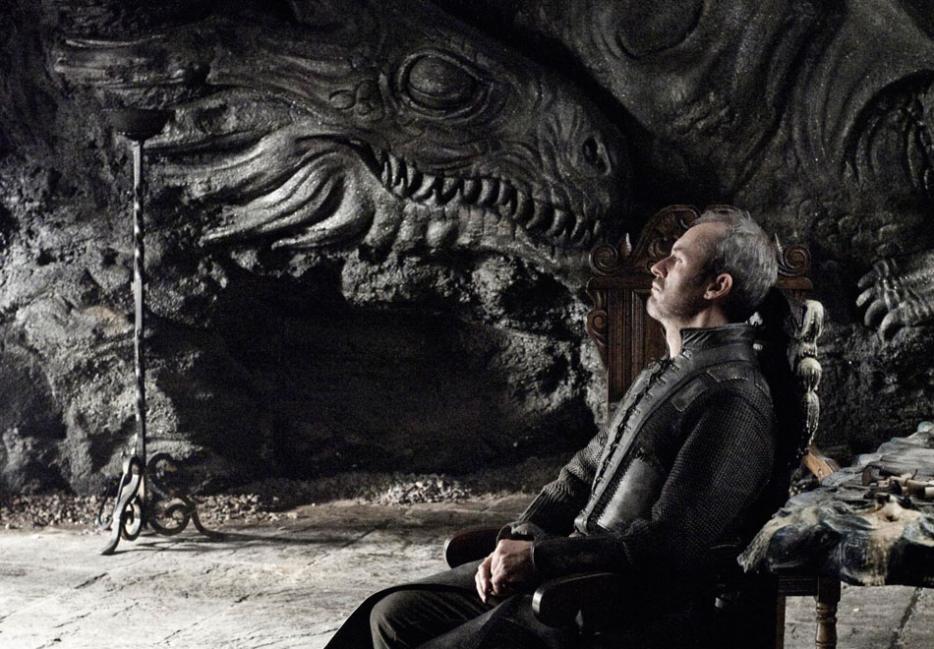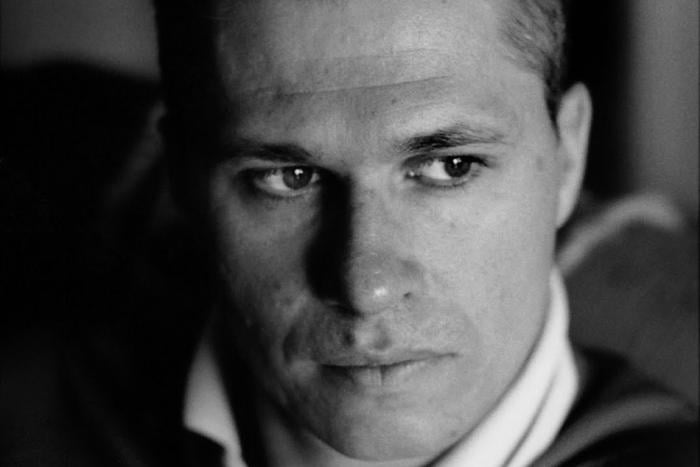While Sansa Stark watches a fleet of ships roll out of the King’s Landing harbour in the season three opener of Game of Thrones, she tries to play a game, spinning stories about where they might be going and what they’ll do when they get there. She’s quickly rebuffed by her handmaiden, Shae, who knows exactly where they’re headed, and tosses aside the game with an appeal to reality: “Why should I make up the story when I know the truth?”
As with nearly all Game of Thrones scenes, psychology and plotting are built on top of one another like stones in a castle wall, layered skyward: the yearnings of a girl who was trapped even before her family staged an open rebellion against the ruling clan versus the worldly knowledge of an ex-prostitute whose wits have kept her alive this long, watching over a peaceful harbour we last saw choked with warships and engulfed in an otherworldly green flame.
But Shae’s all-too-literal-minded line also explains a lot of the appeal of the series (and the books on which it’s based) to both the dyed-in-the-cloak nerds who first latched onto it and the growing circle of high-minded television watchers who may not necessarily know their beholders from their Uruk-hai. For all the fire-breathing dragons and blue-eyed zombies that stalk at the edges of the show, Game of Thrones has more in common with Hilary Mantel than it does with J.R.R. Tolkien.
The approach was all but a revelation when the books arrived in the late ’90s—the standard pitch as a friend forced a thick-as-a-brick volume with a Robert Jordan-ian cover on you was some variation of, “It’s not what you’re thinking; I’m not what you’re thinking”—but television-wise, Game of Thrones is merely the most epically scaled and fanciful in a run of psychologically dense, (soap) operatically plotted series colouring inside genre lines. Mythical beasts serve roughly the same purpose as the hits Tony Soprano ordered, forcing soul-searching and character growth out of our cast.
Like those series that depict worlds with which the standard prestige drama-viewer has more or less no actual experience—the crime of The Sopranos, Breaking Bad and The Wire most specifically, but also the historically distant eras of Mad Men and Deadwood, and maybe even the pointedly narrow modern focus of something like Girls or Friday Night Lights—Game of Thrones earns its bona fides mostly by being nasty, brutish and long on detail. Or, as Sansa puts it in her reply to Shae, “The truth is always horrible or boring.”
This works both as a reasonably realistic depiction of the hideous Middle European world that most fantasy sets itself in (or, actually, slightly above), and, as with those other series, to short-circuit our expectations of television’s mass entertainment tendencies, where everything is, if not exactly pleasant, at least adherent to the standard arcs of good triumphing, only winners getting their history, and so on. Season one hero Ned Stark’s head on a spike has been, up until now, the defining image of a series that may believe in dragons, but won’t let strong morals and noble tactics go unpunished (kudos to those optimists who don’t consider that a mark of authenticity), and won’t spare characters just because we like them.
The challenge for the show’s future is maintaining its foothold on reality as more fantastical elements appear. The medieval world of Game of Thrones is on the edge of a kind of magical enlightenment, where forces that even most of the characters treat as mythic are starting to assert themselves. The tall tales of the first season came to life with Daenerys Targaryen’s dragons in the finale; the second season saw a shadow monster, a (literally) multi-faceted assassin, and an undead army as major plot points, with characters openly questioning the rules of the world they thought they knew. The first few episodes of season three take all those things a step further—the phrase, “First time you’ve seen a giant?” is spoken—and those familiar with the books know it’s only uphill from here.
For Game of Thrones to retain its authenticity hook, then, it’s going to have to become less Tony Soprano and more Buffy Summers. Joss Whedon’s vampire-slayer series is certainly television’s (and maybe pop culture’s) ultimate marriage of magical creatures and human stories; it sacrificed neither teen drama nor vampire mythology (with an often overt metaphorical hook) from its overarching message of a young woman discovering a wearying power within, keeping in play specific bumps in the night that paralleled its character’s problems, often brilliantly so (say it again: Once More, With Feeling).
Fantasy, especially on television, hasn’t always considered its odd worlds as much of anything beyond impediments for the hero’s journey, but there’s already proof in Game of Thrones that its characters’ machinations come first. Stannis Baratheon’s dalliance with a fire priestess suggested as much as his bullheadedness that there may be more to his claim to the throne than the heir’s rights he’d previously proclaimed; Daenerys’ dragons are a downright Buffian metaphor for her emergent power. Hell, the mythical world generally abuts and enhances all those forces that move our lives beyond our control, from the whims of rich families to the ravages of weather. Winter, after all, as we’ve been reminded countless times, is coming.
Season three, at least in the early going, is not fully into the mystic yet: most of the plot threads stay firmly in the old world muck the series has built up, with Tyrion Lannister attempting to claw his way back to power, Robb Stark looking to rally his northmen towards King’s Landing, Jon Snow infiltrating a Wildling army, and Daenerys and the assorted others scrabbling as ever for their footholds. But as the zombie-like White Walkers leave ghastly runes in their wake and dragons grow into veritable RPG adversaries, Game of Thrones is increasingly resembling the mirror Tyrion uses to examine the vicious scar he picked up at the end of last season: a reflection of the world with warped and hazy edges.






